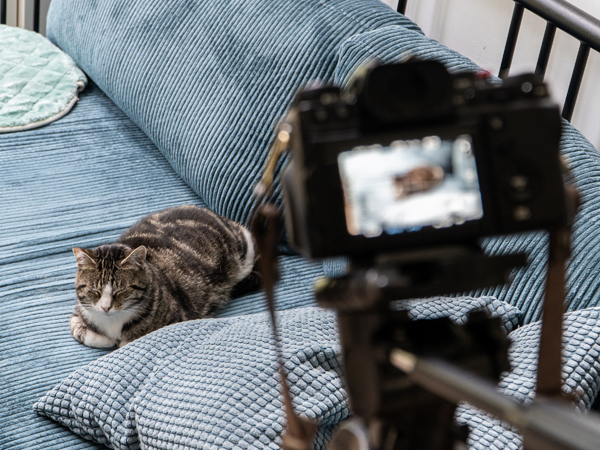
Taking a photo of our animal companions as their natural and true selves is something special that can be very hard to do. Pet photography requires time, patience and a love of animals, qualities which are all in abundance among the house and pet sitting community.
Whether you want to brush up on your photography skills or start drilling down into the technicalities of light, shutter speed and editing, we’ve found tips from some of the best in the business to help you along the way.
Know your subject
Know what motivates your pet-pal to draw out their personality for some truly magical photography moments. Adobe cites suggestions from photographer Robyn Arouty, which includes observing the pet to find out if they like to play with toys, are more subdued or energetic and excitable. Knowing your pet’s temperament will help you plan for the photography session ahead.
Create a comfortable environment
It seems that every photography expert says that patience is key when it comes to pet photography. Create an environment that suits your subject’s personality and give them time to explore the setting and become familiar with the smells, furniture and space.
Light and Shutter Speed
When we drill down the technical aspects of pet photography, everyone agrees that light and a fast shutter speed could be what makes a good shot a great shot. Photographer Carli Davidson on the Adobe website suggests using a fast shutter speed to freeze motion to achieve better quality photos before your dog, cat or animal subject moves to scratch, sniff or yawn.
In terms of lighting, Canon offers tips from photographer Jenn Cooper who suggests avoiding direct sunlight when taking photos – for pups and people. The recommended time to shoot outdoors is during the early hours in the morning and late afternoon when the light isn’t as strong and is low to the horizon.
Profoto says that using a flash for indoor photography can also be helpful. To make sure your pet isn’t overwhelmed by the flash give them a treat every time the flash is triggered, so they become accustomed to the experience.
View the world from their perspective and use noise
Get down to your subject’s eye level and capture the world as they see it. Use quick sharp noises to grab their attention – but don’t overdo it. Too many noises can cause your pet to become confused, stressed and irritable.
Make it fun
Creating an environment and an approach that makes the photo session fun for the pets and people will deliver an enjoyable experience for everyone and create amazing photos! Don’t push your subject to strike a pose or perform in a particular way just go with the flow and catch them in their own unique moments to capture authentic memories.
Editing
Canon photographer, Jenn Cooper says that cropping is the first thing she does when editing her shots. Crop out distractions in the photo, such as balls or other things that detract from the subject. For photographers will a little more know-how, work to adjust shadows, highlights, contrast, vibrance and clarity.
Whether you want to improve your photography for your own pet-pal or a fur-friend you are pet sitting for, these tips are sure to catapult your pet photography to the next level. Sign up as a pet sitter to meet a new fur-kid on a pet sitting experience and put your new photography skills to the test!